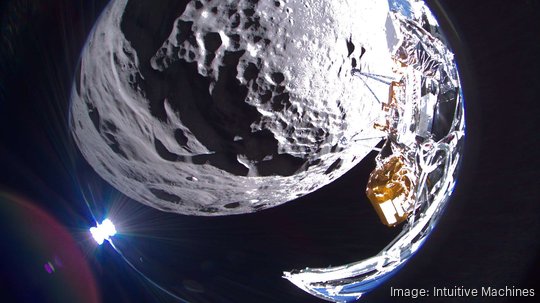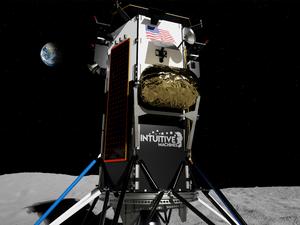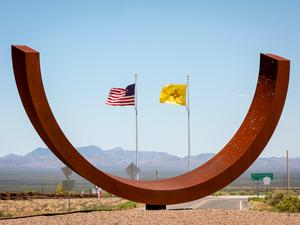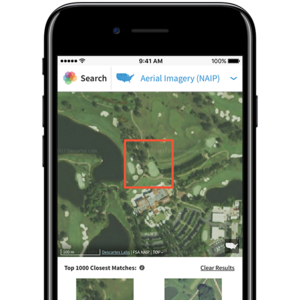
A piece of technology tested in New Mexico used to help Intuitive Machines' lunar lander navigate its descent didn't work during its lunar landing, which the company said Friday afternoon was part of what caused the spacecraft to tip over.
Houston-based Intuitive Machines Inc. landed one of its Nova-C landers called "Odysseus"on the moon Feb. 22. It became the first U.S.-made vehicle to land on the lunar surface since 1972's Apollo 17 mission.
But during a Friday afternoon NASA news conference, leaders from Intuitive Machines, including CEO Steve Altemus and CTO Tim Crain, said trouble with the lander's navigation system caused it to descend faster than intended. Altemus said the craft was traveling about six miles per hour downward and about two miles per hour sideways when it hit the lunar surface — around three times faster than the company had planned.
That accelerated descent, Altemus said, caused the lander to tip over when one of its legs caught a rock on the moon's surface. Altemus said Odysseus was resting on its side, propped up on another rock.
Part of what caused the lander to come in hotter than expected was a problem with its navigation system, and one component in particular — the lander's laser range finders, used to guide Odysseus during orbit and landing. Intuitive Machines tested its laser ranger finders, in part, in New Mexico, through a series of tests conducted in the state in 2021 and 2022.
Altemus said a physical safety switch was not flipped before launch, which caused the lasers not to work. He explained that the switch acted like a firearm safety during ground testing and couldn't be reverted after the mission launched.
"I get into the control room — I can laugh about it now — and Tim [Crain] was on console as the mission director, and I said, 'Tim, we're going to have to land without laser range finders,'" Altemus said. "His face got absolutely white because it was like a punch in the stomach that we were going to lose the mission."
The team tried a few different solutions, including quickly running what Altemus called "simulation tables" to predict how the lander could operate without the laser system, before Crain came up with the idea to use data from the Navigation Doppler Lidar instrument on board Odysseus to incorporate into the lander's navigation system.
That Navigation Doppler Lidar, or NDL, instrument was developed at NASA's Langley Research Center. Patching data from the NDL into the range finder system was a rapid, advanced feat of software engineering.
It required the Intuitive Machines team first to write measurements gathered from the NDL into the range finder. But since the NDL was taking navigation measurements from a different location on Odysseus than the lasers would have been pointing, the team also had to tell the computer that the laser beams were pointed in different directions.
"In normal software development for a spacecraft, this is the type of thing that would have taken a month, of writing down the math, cross-checking it with your colleagues, doing some simple calculations to prove that you think you're right, putting it into a simulation, running that simulation 10,000 times, evaluating the performance — usually you find an error because you did something wrong and you roll it back and you go again," Crain said.
"Our team basically did that in an hour and a half," he continued. "And it worked. It was one of the finest pieces of engineering I've ever been affiliated with."
Joel Kearns, deputy associate administrator for exploration for NASA who was part of last week's news conference, said the NDL's performance during its last-minute full-scale inclusion in the mission was "outstanding" and "reliable."
Read more about Intuitive Machines' historic lunar mission in sister publication Houston Inno here.
Intuitive Machines first noticed a problem with the laser range finder technology when attempting to measure the lander's orbit around the moon. While the team initially thought the lasers fired, incorrect telemetry data showed they didn't, Altemus said.
It was then a rush to find a solution to navigate the lander's final descent. Crain said in normal operations, the laser ranger finders wouldn't have been activated until after the lander began its powered descent to the lunar surface.
The company has relied on other NASA technology during its IM-1 mission, namely NASA's Deep Space Network, a super powerful series of antennas used for space communications. Metis Technology Solutions, an Albuquerque-based aerospace company, works with the Deep Space Network as a subcontractor, providing network operations analysis, network scheduling expertise and program infrastructure support, according to an October 2023 news release from Metis.









